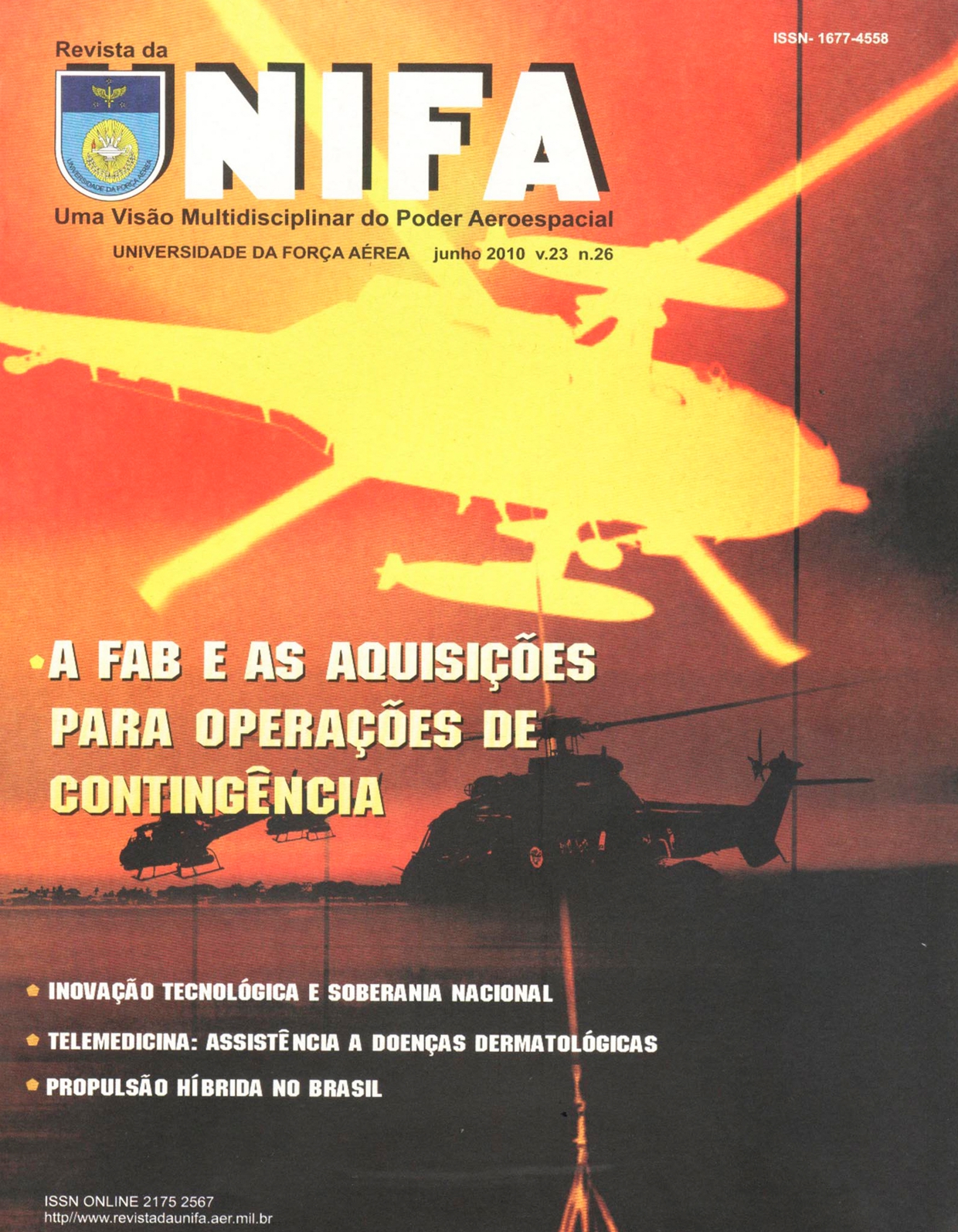Telemedicine:
development and validation of tools for assisting dermatological diseases
DOI:
https://doi.org/10.22480/revunifa.2010.23.796Keywords:
Telemedicine, Telediagnostics, Teledermatology, XinguAbstract
The need for communication between the space missions and support centers in land set new boundaries for the development of telecommunications technologies such as telemedicine. This area of research enables the development of equipment and systems for sharing medical information, which have been used by space agencies since the first manned missions. Due to its wide applicability, this new concept enabled the assistance of patients in poor and remote locations in various countries, encouraging research groups in developing solutions and tools for health care in these communities. The Center for Microgravity - FENG at the Catholic University of Rio Grande do Sul has developed a series of studies to establish methodologies for easy handling of these tools, deploy and validate teledermatology systems in unattended locations, assess the impact of their use for diagnosis and treatment of disease and foster the transference of medical knowledge and technology among professionals. To carry out the project, equipments for dermatological images acquisition, a software for medical data sharing, and operational manuals to standardize its use were developed. Data collections were performed at three different locations, where teams took care of unattended communities in conjunction with local health teams. During the project accomplishment, 198 patients had medical care, allowing the development and validity of tools in telemedicine; students, teachers and health groups training, and the creation of printed and audiovisual manuals.
References
BRATTON R.L.; CODY C. Telemedicine applications in primary care: A geriatric patient pilot project. Mayo Clin Proc, v. 75, n. 4, p. 365-368, 2000.
CARDOSO R. A Successful Telemedicine Experience in the Brazilian Amazon Region. Acta Informatica Medica, v. 15, n. 4, p. 211 – 215, 2007.
CHEN J.W.; HOBDELL M.H.; DUNN K.; JOHNSON K.A.; ZHANG J. Teledentistrynd its use in dental education. J Am Dent Assoc, v. 134, n.3, p. 342-346, 2003.
DOARN, C.R.; FERGUSON E.W.; NICOGOSIAN A.E. Technology and Science Telemedicine and Telescience in the US Space Program. International Symposium on Space, n. 20, Gifu, Japan; Japan; 19-25 May 1996. p. 1307-1312. 1996.
EDWORTHY S.M. Telemedicine in developing countries. BMJ, v. 323, n. 7312, p. 524-525, 2001.
FIELD M.J. Telemedicine: A Guide to Assessing Telecommunications for Health Care. National Academy Press, Washington, DC: 1996. 288 p.
GARSHNEK V.; BURKLE F.M. Applications of Telemedicine and Telecommunications to Disaster Medicine: Historical and Future Perspectives. JAMIA, v. 6, n. 1, p. 26-37, 1999.
MIOT H.A.; PAIXÃO MP, PASCHOAL F.M. Basics of digital photography in dermatology. An Bras Dermatol, v. 81, n.2, p. 174-180, 2006.
NATIONAL AERONAUTICS AND SPACE ADMINISTRATION - NASA. The Pakistan Log: Reports by Dr. Azhar Rafiq. Disponível em: < http://ims.ivv.nasa.gov/vision/earth/technologies/pakistan_telemedicine_log_20060121.html>. Acesso em: 18 fev. 2010.
WHO WORLD HEALTH ORGANIZATION. Disponível em: <http://www.who.int/en/>. Acesso em: 02 jun. 2009.
Downloads
Published
Issue
Section
License
Copyright (c) 2010 Thais Russomano, Ricardo Bertoglio Cardoso, Maria Helena Itaqui Lopes, Helena Willhelm de Oliveira, Eder Huttner, Edison Huttner, Márcio Kessler, Sérgio Célia

This work is licensed under a Creative Commons Attribution-NonCommercial 4.0 International License.
Revista da UNIFA permite que o (s) autor (es) mantenha(m) seus direitos autorais sem restrições. Atribuição-NãoComercial 4.0 Internacional (CC BY-NC 4.0) - Revista da UNIFA é regida pela licença CC-BY-NC









